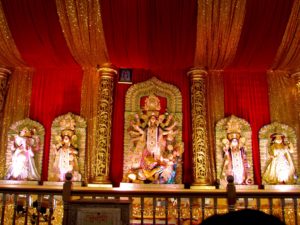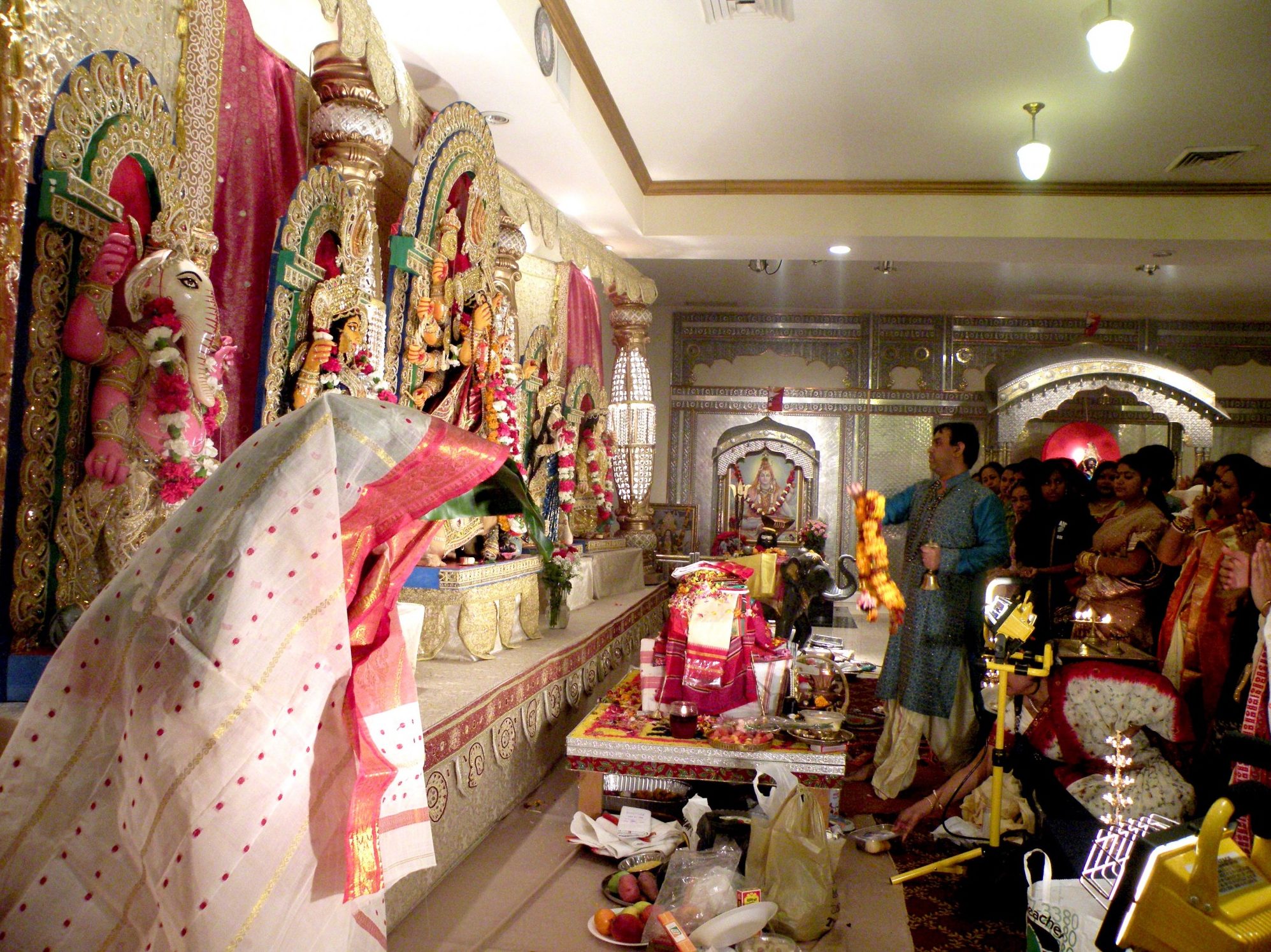DURGA IN THE DIASPORA: October is the cruellest month for a Bengali in New York City, mixing memory and desire
It’s been too long in this foreign place, long enough for the word “foreign” to feel strange now. New York City (NYC) is my home (the certainty of which is still debatable), while my other home, Kolkata, has moved on, unfazed by my absence. The memory of it often attempts to trump the reality of the present city. As August rolls in, memories of an old Kolkata haunt me. I remember the throngs of neighborhood bros knocking on our doors for “chanda,” – donations for the local Durga Pujo. I hear things have changed now, young people in Kolkata have too much on their plate – the hustle is a passé. Funds are raised with less annoyance or maybe that’s just a rumor.
August in NYC is hot and humid, September brings some relief, and October ushers in the fall season. As I see the maple leaves turn yellow and red outside my window, portentously reminding me of a brutal winter ready to hustle its way into the city, I long for the smell of Shiuli Phool, and the sight of Kaash bordering the train tracks in the suburbs of Kolkata. What I remember most is the preparation for the Goddess – the familiar spot in the neighborhood where the pandal would be constructed, the stress of completing all the pujo shopping, the frantic runs to meet the deadline at the tailor’s – NYC speeds forward without the burden of such memories. October is thus the cruellest month, mixing memory and desire, stirring the dulled roots of my cultural identity with the sounds of “dhaak” – a call from a distant past. In sum, pujo in New York/ New Jersey area is often a weekend affair – five days of joy and celebration squished into two days of fun and “adda” with old and new friends from India.
New Jersey has a thriving Indian community hence the various pujos in that state draw most Indians from the NYC/NJ area. NYC on the other hand has a large Bangladeshi community along with Bengalis from India. As a graduate student with limited funds, I found home in an unlikely place in NYC – amongst the Bangladeshi community who celebrate the five days with disciplined diligence at Bangladeshi Hindu Mandir – a quaint temple, tucked away in Elmhurst, Queens. Elmhurst is more than an hour of subway ride from Brooklyn, where I live. The October chill makes that long ride even more difficult in a saree. Thankfully, New Yorkers don’t find it strange to see a woman or a man in a saree – burkha is a different story, the hostility that it can provoke is a subject reserved for another time. There is charm in celebrating Durga Pujo at The Bangladeshi Hindu Mandir instead of the more culturally familiar Indian diaspora pujos in New Jersey – that famed Bangladeshi hospitality is what makes it so unique. While the “Hindu” signifier reeks of a certain problematic exclusivity, the temple makes no demand for an entry fee. The pujos in New Jersey often charge a double dollar entry fee because organizing such an event anywhere is expensive. The Mandir has the advantage of being a permanent establishment hence its “ticket-free but donations welcomed” policy makes it a more class-inclusive place, if not inclusive in terms of religion. All, irrespective of creed in Bengal, after all, celebrate Durga Pujo. I don’t know if Bangladeshi Muslims also come to the temple. In a saree or a dhoti or a kurta, we are all just fabulous Bengalis. In this Mandir they have a regular priest, not the usual software engineer turned weekend priest of the New Jersey area pujos. Since it’s a temple it has all the other Gods and Goddesses – Kali, Shiva, Lakshmi, and more. However, for five days the Goddess Durga and her children steal the show. With flowers and gold jewelry, the Goddess takes center-stage as the Bangladeshi community opens its arms and receives its estranged sisters like me who hail from West Bengal/India. Bengali, despite the dialectical differences, helps bridge whatever chasms lay between us beyond the Mandir. People in sarees, salwars, dhotis, and kurtas pray together, most importantly, bond over khichiri, mixed vegetable curry, and rosogolla, and part ways with the familiar “abar ashben, khhub bhalo laglo.” The local residents bring out their harmoniums and tablas and sing kirtan and other folk songs – I feel both at home and a little foreign as I catch up with my other long lost friends from Kolkata and the new ones I have come to know in New York. In that brief five or six hours we barely manage to pray to the Goddess for a whole minute – the rest of the time is reserved for good old “adda,” followed by a trip to Jackson Heights (the famous South Asian neighborhood of New York City) to intensify this brief shot of nostalgia with mutton biriyani and paan at a Bangladeshi restaurant. The saree begins to chafe and rebel against my bloating tummy, a sad reminder that the evening must come to an end – the long tiring train ride back to Brooklyn and the bustle and hustle of capitalism must begin as nostalgia grudgingly curls into a tight knot and burrows deep into my guts. “Tums” will soften that heartburn and straighten out its grip, holding it in check, until next year.

I go there not in search of the home I left but in search of the home that could have been – to “cruise utopia,” to use the famous queer-of-color theorist José Esteban Muñoz’s term for describing a possibility, however, ephemeral, in the now, in the mundane. I wonder what Bengal could have been had it not been splintered arbitrarily, with ruthless haste by the British 72 yrs ago! The Goddess in “probash,” in the diaspora is but a reminder of that possibility, a distant call from afar, that breathes power into that dream. For now the drum beats on and transports my body and soul towards that smoky scene of the powerful dhunuchi dance at Maddox Square – “mixing memory and desire” – and prepares me to embrace once again a different present.


Comments are closed.